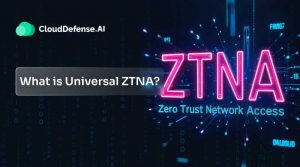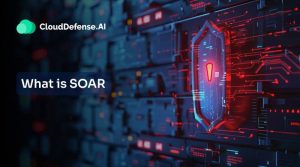What is Cloud Workload Protection (CWP)?
Cloud workload protection serves as a continuous process that helps organization protect their cloud workloads present in databases, VMs and physical servers while they move between cloud environments.
For a cloud-based application to function smoothly, you will have to keep the entire workload free from any security risk. Even though it is a continuous monitoring and threat mitigation process, it is quite different from traditional application security.
It monitors communication between applications and services rather than focusing on traditional traffic. In general, CWP not only helps you identify, secure, and manage cloud workloads but also improves overall compliance by reducing risk surface. This process usually involves two different methodologies: bare-metal hypervisors and microsegmentation.
What micro-segmentation does is that it segregates the data center into different security segments and then implements security protocols for each segment. However, a bare-metal hypervisor creates multiple isolated VMs for the hardware, and when a particular VM is compromised, it won’t be able to spread to the workloads.
What is a Cloud Workload?
A cloud workload consists of the cloud-based resources and processes required for an application, service, or capability to function. Common examples of cloud workloads include databases, virtual machines, web servers, and containers.
Why is Cloud Workload Protection Important?
Cloud workload protection is an important aspect for every organization operating in the cloud as it helps in protecting the workload. By securing the workloads, CWP enables the organization to build and run cloud-native applications with ease and speed.
Besides the application, a cloud workload contains all the processing data, network resources, and involved processes that enable communication between the user and the application. So, it becomes essential to protect the workload through cloud workload protection, as an attack on any component will jeopardize the whole working of the application.
When cloud workloads are passed from vendor to vendor, the responsibility for workload protection is shared, which leads to complications. However, cloud workload protection helps in solving the issues and helps everyone share the protection responsibility.
Benefits of Cloud Workload Protection
Cloud workload protection is not only about protecting the workloads; it offers a range of benefits that make it a vital part of modern cloud security. Here are some key benefits you will get from implementing cloud workload protection:
- Complete Workload Visibility: One of the most significant benefits of CWP is that it provides complete visibility into all the workloads and helps you to monitor every activity. Importantly, through complete visibility it helps your team to accurately identify, hunt and respond to threats. Moreover, it also lets you configure the workloads to effectively manage vulnerabilities.
- Continuous Behavioral Monitoring: CWP provides your team with a workload behavior monitoring feature that helps you identify unusual behavior or deviation from standard behavior. It helps in quickly detecting any intrusion that might be happening and provides alert to the team to remediate it.
- Combined Log Management and Monitoring: When you implement a CWP in your cloud environment, it combines log management and monitoring in a single interface. Through that interface it allows you to check everything that is happening with every part of the workload in multiple cloud environments.
- Impressive Scalability: Cloud workload protection offers you an impressive scalability where it ensures consistent security coverage even when the number of workloads increases with time. It won’t leave any security gap when new workloads are added or migrated across varied cloud environments.
Cloud Workload Security Challenges
Even though CWP offers a range of benefits, it also faces many security challenges. Since public cloud deployment relies on a shared security model, both providers and customers must take necessary steps to ensure optimal security control.
The complexity of cloud workloads and advanced cloud technologies introduces new challenges. Here are a few you may encounter while using CWP:
- Wide Attack Surface: Modern organizations often manage numerous virtual servers, systems, workloads, containers, and instances across various off-premises locations, which increases the attack surface. The rising number of system instances and virtual servers makes it difficult for CWP to maintain consistent security.
- Performance: Performance poses a challenge for cloud workload security due to the dynamic nature of cloud environments. Rapid deployment and scaling expand the attack surface, making it difficult for CWP solutions to maintain performance across diverse cloud environments.
- Visibility: Although CWP provides good visibility, achieving granular insight into workloads remains difficult. Traditional security tools and the short lifespan of containers hinder data collection and incident investigations, reducing overall visibility.
- Dependency on Cloud Service Providers: Most organizations rely on multiple cloud providers, creating a dependency on their security practices. Vulnerabilities or security issues on the provider’s end can compromise your cloud workloads.
Key Requirements of Cloud Workload Protection Platform
To ensure optimum protection of the cloud workload, there are certain key requirements that every CWPP should meet. Let’s take a look at some key requirements of a cloud workload protection platform:
Complete Visibility
Every security team must get complete visibility into all the workload events, especially container events when using a CWPP.
When the platform offers the ability to capture, assess, and store all the security events, it will provide comprehensive visibility and allow the team to identify and investigate threats. Visibility into all the events enables the team to respond to issues quickly.
Runtime Protection
Another key requirement of CWPP is runtime protection because it helps secure workloads, including containers and VMs, and prevents any kind of security issue.
Vulnerability and misconfigurations can occur if they are not properly monitored and protected. Importantly, containers can also be attacked when they are left vulnerable. Runtime protection is useful in protecting the workloads as well as the host throughout.
Performance
Performance is a huge requirement for any CWPP because it will ensure it delivers the protection needed for workloads while having minimal impact on the workflow, system, and teams.
Most importantly, CWPP should be able to deliver the protection needed without slowing down DevOps. If there is any inconvenience in DevOps, then it could lead to various repercussions that will ultimately hamper the overall security of the application. Moreover, CWPP should be able to secure workloads across the cloud, whether they are public, private, or hybrid.
Seamless Integration
A CWPP must offer seamless integration with all the existing tools of your organization and ensure the security of the workload throughout its lifecycle. The CWPP should integrate easily with the cloud platform you are operating, whether it is GCP, Azure, AWS, or any other similar platform.
Importantly, the CWPP must also integrate with the SIEM system in your infrastructure and other security tools that help streamline the security operation.
Cloud Workload Threats
Cloud workloads face a variety of security threats that can compromise the integrity and performance of your applications. To protect your cloud environment, it’s essential to be aware of these threats. Here are some common cloud workload security threats to watch out for:
- Misconfigurations: Incorrect settings can leave cloud resources exposed, making them easy targets for attackers.
- Data Breaches: Unauthorized access to sensitive data is a major threat, often resulting from vulnerabilities in the cloud infrastructure.
- Insider Threats: Employees or contractors with access to cloud workloads can intentionally or accidentally cause harm by exposing or damaging data.
- Insecure APIs: Publicly accessible APIs can be exploited by attackers if not properly secured, giving them access to cloud workloads.
- Malware and Ransomware: Malicious software can infect cloud workloads, leading to data loss or the need for costly recovery efforts.
- Account Hijacking: Compromised credentials can lead to unauthorized control over cloud resources, enabling attackers to perform malicious actions.
- Distributed Denial of Service (DDoS) Attacks: These attacks overwhelm cloud workloads, rendering applications unavailable and disrupting services.
Conclusion: Cloud Workload Protection with CloudDefense.AI CWPP
CloudDefense.AI stands as a top choice for securing cloud workloads, offering advanced protection against complex cyber threats. This platform unifies workload security by integrating everything into one solution. Here’s why CloudDefense.AI is the ideal solution:
- Advanced Assessment: Its agentless platform combines workload-specific intelligence with cloud configuration details for a comprehensive security assessment.
- Quick Threat Identification: CloudDefense.AI rapidly identifies cloud threats, favored by global enterprises for its speed and precision.
- Detailed Insight: It provides detailed insights into security threats, collecting data from runtime, storage, and cloud setups.
- Vulnerability Prioritization: By using over 20 vulnerability data sources, CloudDefense.AI prioritizes threats for fast mitigation.
- Advanced Malware Detection: It matches file hashes to detect malware with high accuracy.
- Threat Tracking: Mapping threats to the MITRE ATT&CK framework enhances its threat tracking and identification capabilities.







